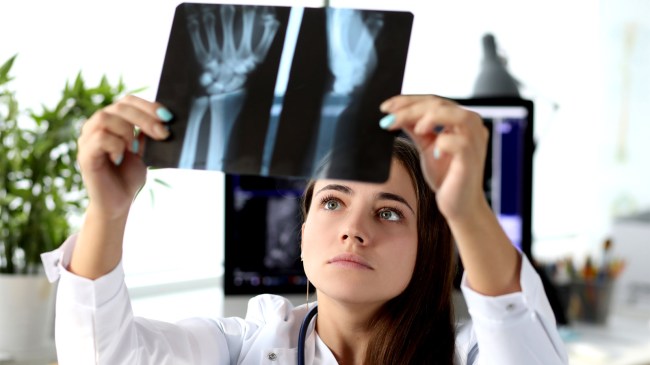iStockphoto
A team of Kyushu University Graduate School of Sciences and Harvard University Medical School scientists recently announced they have made a new discovery that sets the stage for regrowing human limbs after amputation.
According to a press release, the scientists “identified proteins that can turn or ‘reprogram’ fibroblasts — the most commonly found cells in skin and connective tissue — into cells with similar properties to limb progenitor cells.”
“During limb development in the embryo, limb progenitor cells in the limb bud give rise to most of the different limb tissues, such as bone, muscle, cartilage and tendon. It’s therefore important to establish an easy and accessible way of making these cells,” explains Dr. Yuji Atsuta, lead researcher in the study which was published in the journal Developmental Cell.
Currently, a common way to obtain limb progenitor cells is directly from embryos, which, in the case of human embryos, raises ethical concerns. Alternatively, they can be made using induced pluripotent stem cells — adult cells which are reprogrammed into an embryonic-like state, and which can later be coaxed into specific tissue types. The new method developed by Atsuta and colleagues, which directly reprograms fibroblast cells into limb progenitor cells and bypasses induced pluripotent stem cells, simplifies the process and reduces costs. It also mitigates the concern of cells turning cancerous, which often occurs with induced pluripotent stem cells.
The researchers first identified a group of 18 genes “that are more highly expressed in the early limb bud compared to other tissues.”
They then cultured fibroblasts from mouse embryos and introduced these 18 genes into the fibroblasts.
What they learned was that by doing so was that the modified fibroblasts “took on the properties and showed similar gene expression to naturally-occurring limb progenitor cells found in limb buds.”
Further experiments narrowed it down to three genes that “were essential to reprogram mouse fibroblasts into limb progenitor-like cells.”
“These reprogrammed cells are not only molecular mimics; we have confirmed their potential to develop into specialized limb tissues, both in laboratory dishes (in vitro) and also in living organisms (in vivo),” said Atsuta. “Testing in vivo was particularly challenging, as we had to transplant the reprogrammed mouse cells into the limb buds of chicken embryos.”
The researchers are now attempting to replicate their findings in human cells and also… wait for it… in snakes.
“Interestingly, the reprogrammed limb progenitor cells generated limb bud-like organoids, so it seems possible to generate limb tissues in species that no longer possess them. The study of limbless snakes can uncover new pathways and knowledge in developmental biology,” said Atsuta.
Humans regrowing lost limbs? Awesome. Snakes growing limbs?! Nope, nope, nope.
In 2021, a study by researchers at the MDI Biological Laboratory in Bar Harbor, Maine suggested humans may actually be able to regrow a lengthy list of body parts using a currently “untapped” ability.
They pointed out in their research that human infants can regenerate heart tissue and children can regenerate fingertips. Those two factors alone led the scientists to believe mammals do possess the genetic code for regrowing lost body parts.
So maybe we’re not as far off from it actually happening as previously thought.

